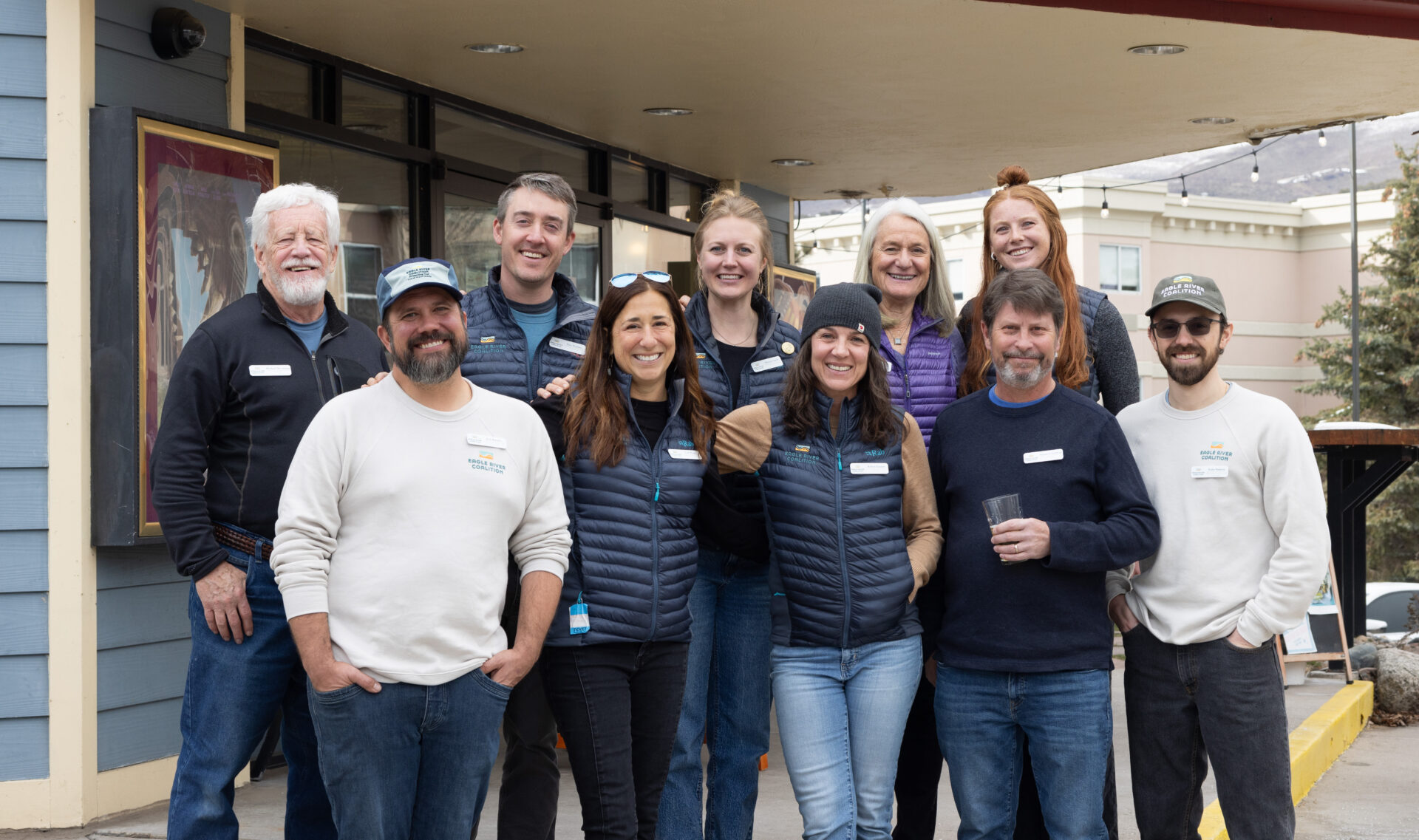
Robyn Janssen, the author of this column, sits on the board od directors of Eagle River Coalition, and can be found wearing the beanie in the front center row of this photo.
Summer’s here — and if you spend time on the water like I do, you know how critical this season is for our rivers. This is when stream flows drop and irrigation ramps up, and every gallon we use at home and in our yards has a ripple effect downstream. As someone who’s observed rivers from both the bank and the boat, I can tell you firsthand: during the hot summer months, our waterways feel the pressure.
The Eagle River isn’t just scenic — it’s alive. It supports native trout, delicate riparian ecosystems and countless days of recreation for those of us who raft, kayak, fish or simply enjoy walking its banks. But when outdoor water use spikes — especially in dry, hot months — it pulls water from the very streams we love. Low flows lead to warmer water, lower oxygen levels and real harm to aquatic life that depends on cold, clean water to survive.
It’s not only fish and wildlife that feel the impact. Excessive water use also reduces flows available for people, communities and agriculture downstream. The Eagle River is part of a larger system where every drop counts. Less water in the river can mean higher costs for treatment, less resilience during drought and reduced availability for neighboring regions that also rely on these headwaters.
A lot of the problem is linked to high outdoor water use. In many communities, summer water demand can more than double, driven by irrigation of lawns, gardens and landscaping. Unlike water used indoors — where about 95% goes down the drain, is treated, and ultimately returns to the river — outdoor water is largely lost to evaporation, soil saturation and plant uptake. In fact, around 80% of outdoor water use doesn’t return to the river at all. This makes conserving water outdoors especially crucial for protecting river health.
That’s also where the Eagle River Coalition comes in. We’re lucky to have a local organization that serves as a voice for the river — a resource that can’t speak for itself. Through restoration projects, water quality monitoring and education programs, the Eagle River Coalition works to connect people with the river and the vital importance of protecting it. It’s crucial that groups like the Eagle River Coalition exist to help build a stronger relationship between our community and this incredible natural resource, one rooted in respect, action and long-term stewardship.
Here’s what you can do this summer to help keep the Eagle River and its ecosystem healthy:
- Water wisely. Only irrigate when necessary, and always before 8 a.m. or after 6 p.m. to minimize evaporation and help plants absorb water.
- Dial it back. Most landscapes need less water than we think. Talk to your landscaper or irrigation technician and adjust for the season.
- Replace thirsty turf. Consider swapping large patches of lawn for native plants that thrive with less water.
- Don’t water concrete. Redirect sprinklers so you’re not watering sidewalks, driveways or streets.
- Fix leaks fast. A tiny leak today can waste thousands of gallons by August.
- Know your use. Keep an eye on your water bills or track your water use if your utility offers an online portal. Understanding your patterns is half the battle.
This isn’t just about bills or rules — it’s about stewardship. If you love this valley and the waters that run through it, now’s the time to act like it. Every smart watering decision keeps more water in the river, where it supports fish, wildlife, wetlands and the outdoor experiences that define life here.
We’re fortunate to live in a place where rivers are still beautiful, clean and accessible. Let’s all do our part to keep them that way.
See you on the water — and thanks.
Robyn Janssen is a board member with the Eagle River Coalition and a lifelong river runner and advocate.
